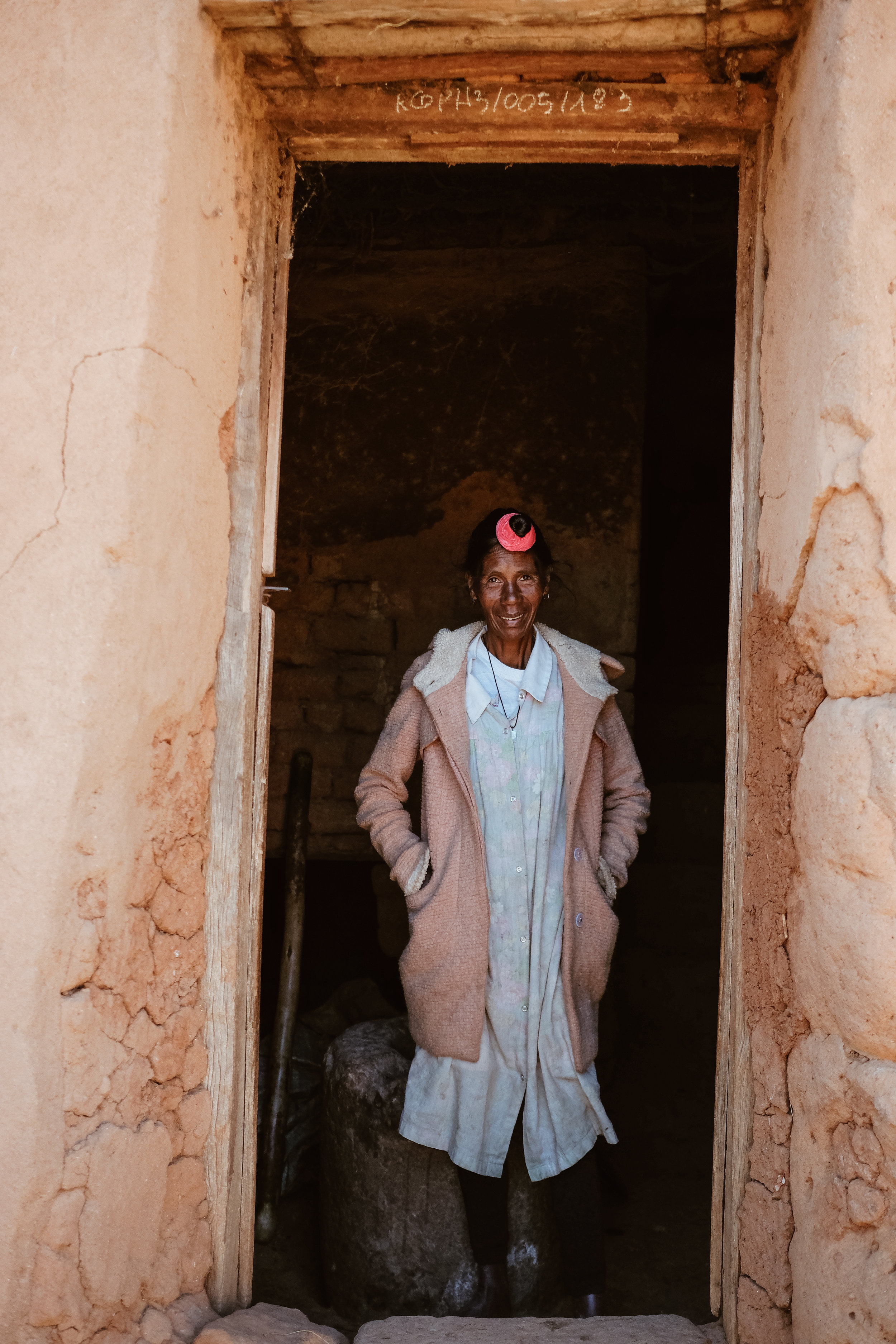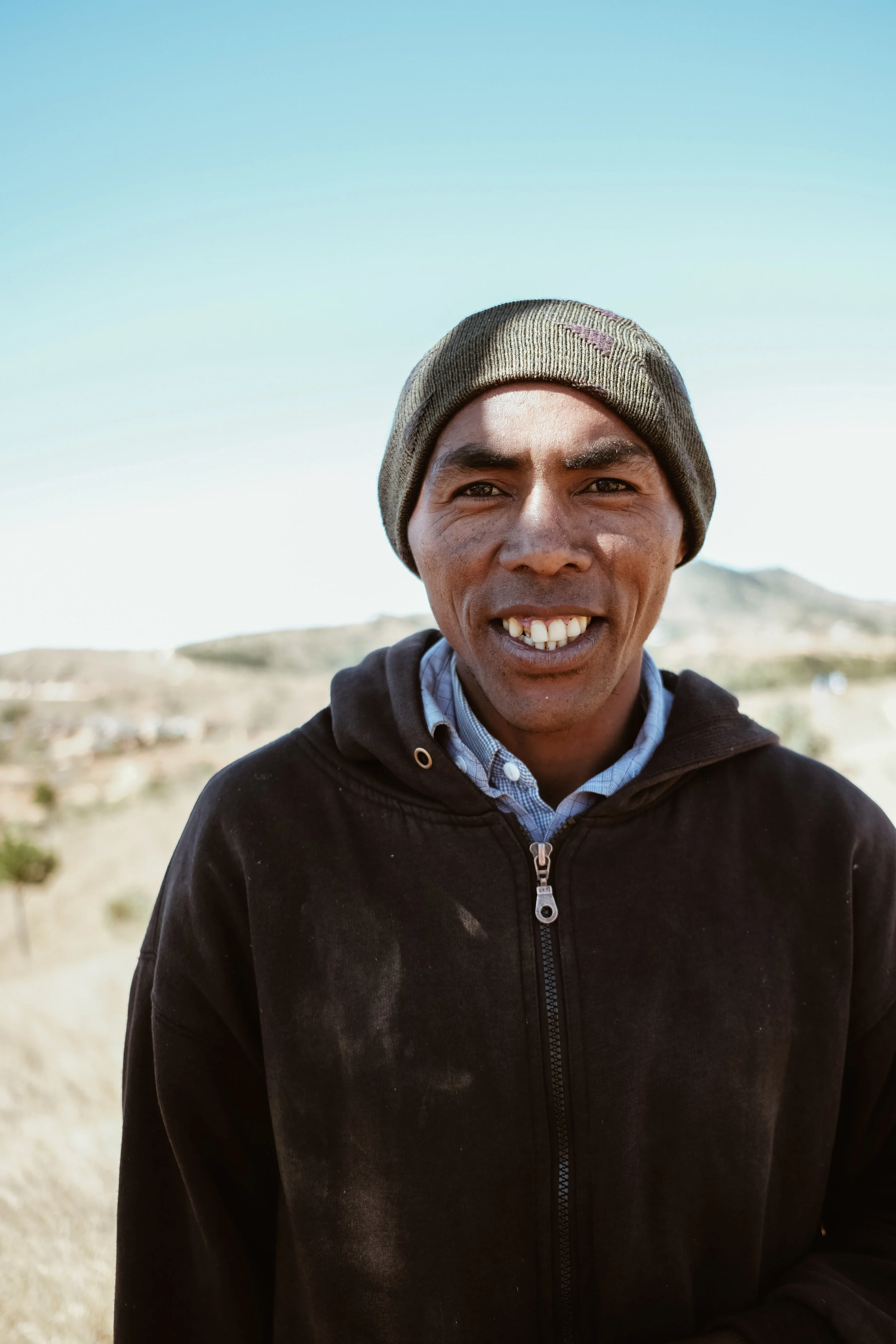
















Famadihana, or 'the turning of the bones', is a sacred ritual practiced by some ethnic groups in Madagascar. The one we came across was practiced by the Merina tribe outside Antananarivo.

The day started with a walk through the nearby highland village of Sarimanina outside Antananarivo.

While walking, we met Bebe Felicite Augustin, who agreed to let us see inside her traditional home. The ground level houses her animals—a pig, two ducks, and some chickens—while the top floor is where the family lives. Bebe Felicite mentioned that she would be going to an ‘exhumation ceremony’ later that afternoon and that we should come along.
Curious, I asked my guide, Luc, what the exhumation ceremony was all about. He had never seen one either but said ‘it’s supposed to be a party.’ Needless to say, I was ready to go.

Bebe Jeanne kindly invited us to her home for a Malagasy lunch of beans, zebu meat, and rice. She would be our guide to where the Famadihana took place.

After lunch we followed Bebe Jeanne and Bebe Felicite to where the crypt is located, a few kilometers (and hills over) from the village.

Eventually we were joined with a few other neighbors and friends. They were all chatting and heartily laughing together, a small taste of what was to come at the actual party.

The ceremony begins with lots of eating and drinking. It takes several hours until the hosting family moves to the crypts so we decided to relax near a tree while we waited for their arrival.

While we waited, a couple of people asked for their portraits to be taken. Dede, pictured here, would end up being our ‘inside man’ at the Famadihana, telling us where to stand and how close we could get while remaining respectful of the ceremony. He also answered any questions we would have and was a kind of live narrator, explaining each step of the exhumation.

The Merina believe their ancestors serve as intermediaries between the living and God and therefore have the power to intervene in events on earth.
Death after the bones are decomposed will take them to a second life -- a life that is similar to the living life.
However, the dead do not move on to the next life immediately and remain in the land of the living until their bodies have completely decomposed.
So Famadihana isn't a preservation ceremony but a way to help the body transition by helping it decompose. And everyone attends, from the very young to the very old.

Meeting the ancestors again is a moment of happiness and joy and sadness is not allowed. By around 4pm the whole (mostly drunk) family, neighbors, friends etc. walk to the crypt. There's a live band. The Madagascan flag is flown above the tomb to signify that this is a nationally recognized tradition. It really is a party.
This is also the only time they are allowed to climb on the tombs like this.
The host family usually spends a huge amount of money on the silk cloths that cover the bodies, the food to feed the village. Friends and family contribute by bringing money or alcohol.

Famadihana happens every 5-7 years. The process starts when an ancestral spirit appears to a senior family member in a dream and says that they are cold and need new clothes. A traditional astrologer then consults the zodiac to determine which day to open and close the crypt.
While people dance and the band plays on, the crypt is opened.

The bodies, encased in soiled white shrouds, are removed feet first from the crypt and carried by family members who then dance with them before laying them on a mat. And as each body was brought out, there was the shouting of a name and a new eruption of excitement.

Once the dancing stops and the bundled corpses are put on the ground, family members lovingly run their fingers across the skeletal outline protruding through the shrouds. Bones and dust are moved about in an effort to sustain a human shape. Sometimes the outer layer of cloth is sprayed with perfume, sprinkled with alcohol, or carefully removed.
Finally the body is wrapped in new sheets of silk cloth and secured with several safety pins or tied with rope

Once the body is dressed again, it must be returned before sunset as it is believed that night has negative energy associated with it. Names are written on the shroud and after the festivities the body is taken back to the crypt head first and placed on a shelf upside down.
If the family can afford it, the body is not immediately returned to the crypt but is taken home for two more days of celebration.